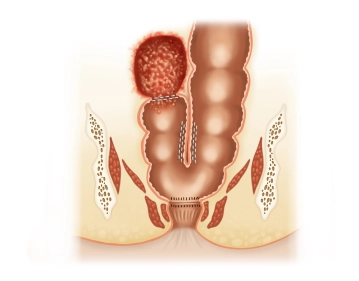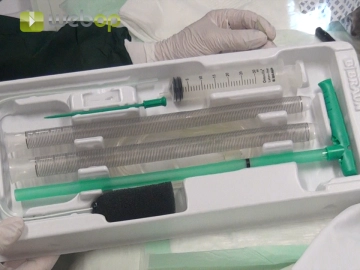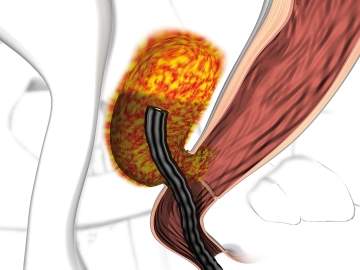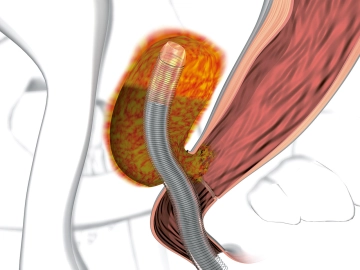-
Endo-SPONGE® – Set
-
Baseline situation
-
Removing the sponge
The wound presented in step 1 was treated with an Endo-SPONGE®, which now needs to be replaced.
First, check the sponge position with an endoscope. Then disconnect the system from the vacuum by disconnecting the drainage tube and setting the suction to zero. Now disconnect the draining tube at the Y-connector. After opening the application set, remove the syringe and dilator to irrigate the sponge. Insert the dilator into the tube and attach the syringe. Irrigate the sponge by instilling physiological saline or, as in this example, simethicone, a liquid defoamer, and pull. -
Flexible endoscopy and sizing the wound cavity
Introduce the endoscope and inspect the wound cavity. A clean granulating surface is already visible at the fundus of the wound cavity, while further proximad considerable detritus and fibrin are evident. Remove the detritus from the wound cavity with endoscopic forceps. Now measure the length of the wound cavity to determine the exact size of the sponge. Next, cut the sponge to that size.
Note:
- The Endo-SPONGE® system is made of an open-pore polyurethane sponge firmly connected to a drainage tube.
- The sponge should decrease in size with each replacement allowing the wound cavity to shrink as well.
-
Inserting the overtube
Wet the sponge with gel,Insert it into the overtube,Advance it with the pusher.Note: The sponge has
Activate now and continue learning straight away.
Single Access
Activation of this course for 3 days.
Most popular offer
webop - Savings Flex
Combine our learning modules flexibly and save up to 50%.
€44.50 / yearly payment
general and visceral surgery
Unlock all courses in this module.
€149.00 / yearly payment





